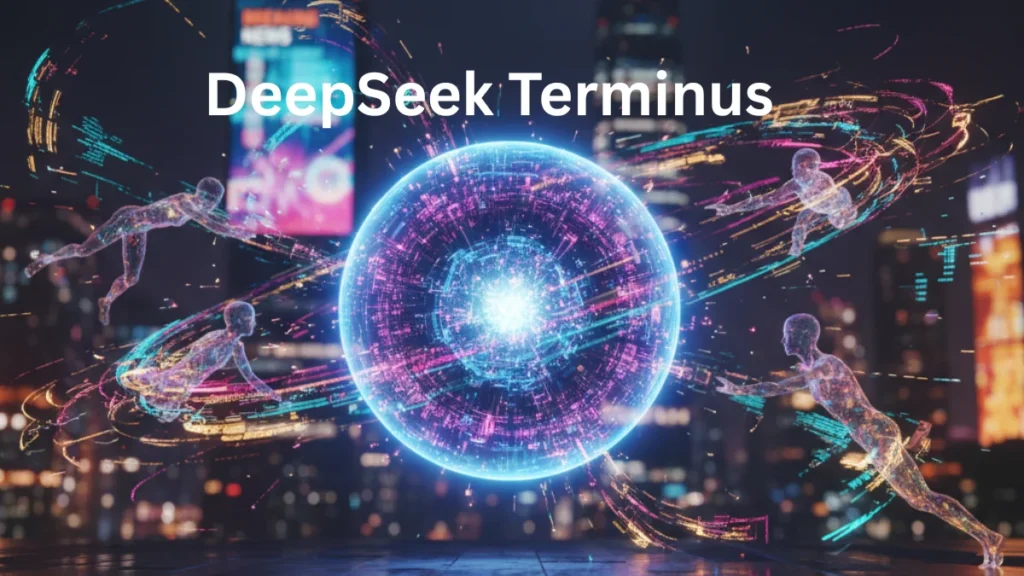DeepSeek has dropped V3.1-Terminus, an open-source hybrid AI that promises better stability, improved agents, and benchmark gains—all while staying far cheaper than U.S. rivals. Here’s why developers and AI-watchers are buzzing.
Key Takeaways
- Stronger Agents: Code and Search Agents upgraded for real-world reliability.
- Cleaner Language: No more random characters or CN/EN mix-ups.
- Benchmark Gains: Outperforms earlier V3.1 in multi-step reasoning tests.
- Disruptive Pricing: Way cheaper than GPT-5 or Claude Opus.
- Open Source: MIT licensed with Hugging Face weights available now.
What is DeepSeek-V3.1-Terminus?
DeepSeek-V3.1-Terminus is the latest open-source hybrid AI model from DeepSeek, featuring stronger agents, cleaner language outputs, improved benchmarks, and industry-low pricing. It supports up to 128k context tokens, dual chat/reasoner modes, and is MIT licensed for commercial use.
What Just Happened?
Chinese AI lab DeepSeek has rolled out DeepSeek-V3.1-Terminus, a major upgrade to its V3.1 model released earlier this year. Far from being a small patch, Terminus is designed to fix old frustrations—like language inconsistencies—and double down on what DeepSeek calls its “hybrid reasoning” approach.
That means Terminus doesn’t just generate text; it can act like an agent, tapping into external tools such as live search and code execution to get actual tasks done.
Why Terminus Matters Now
The timing is key. With OpenAI, Anthropic, and Google racing ahead, DeepSeek’s strategy is different: keep prices extremely low, keep it open-source, and focus on reliability. For developers tired of locked-in ecosystems, Terminus feels like a counterpunch from China’s fast-growing AI sector.
What’s New in DeepSeek Terminus?
1. Cleaner, More Reliable Outputs
One of the biggest complaints with earlier versions was random Chinese/English mix-ups and stray characters. Terminus addresses this, producing more stable, professional outputs across both chat and reasoning modes.
2. Stronger Built-in Agents
- Code Agent: Generates more reliable code with fewer hallucinations.
- Search Agent: Handles live web tasks better. Benchmarks like BrowseComp jumped from 30 → 38.5, proving it’s not just fluff.
3. Dual-Mode Flexibility
- Chat Mode: Fast, lightweight, supports function calling, JSON, and 8k token outputs.
- Reasoner Mode: Handles heavy lifting with 64k output tokens and up to 128k context—enough for a whole book.
4. Benchmark Improvements
- Terminal Bench: 31.3 → 36.7
- Simple QA: 93.4 → 96.8
- SWIB multilingual: 54.5 → 57.8
- GPQA Diamond: 80.1 → 80.7
- Humanity’s Last Exam: 15.9 → 21.7
Some coding-heavy benchmarks slipped a little, but overall Terminus leans toward stability over raw speed.
Open Source, Aggressive Pricing
This might be the biggest news. While GPT-5 costs $10 per million tokens and Claude Opus hits $75, DeepSeek keeps its pricing jaw-droppingly low:
- Input tokens (cache hits): $0.07 per million
- Input tokens (cache misses): $0.56 per million
- Output tokens: $1.68 per million
That’s not just cheap. It’s disruptive, making Terminus one of the most affordable large-scale LLMs on the planet. And yes, it’s fully MIT licensed—meaning anyone can use it commercially.
Real-World Use Cases Emerging
Early testers have shown mixed but impressive results:
- Built a working 3D Minecraft clone in raw code.
- Generated financial planning strategies with inflation adjustments.
- Produced structured SaaS landing pages with animations.
In other words, great for structured reasoning and practical applications—still a bit shaky on artistic coding flair.
The Bigger Picture
DeepSeek is positioning Terminus as a versatile workhorse—cheaper, faster, and more flexible than its heavyweight sibling R1, which still leads in math and logic. Analysts note that Terminus’ 685B parameters put it toe-to-toe with U.S. proprietary models—while staying open-source.
But there are caveats. Like many Chinese AIs, political filters are baked in, which can affect reasoning on sensitive topics. And some technical quirks, like missing FP8 optimizations, remain.
Still, the release signals something bigger: China’s open-source AI movement isn’t slowing down. With chatter about DeepSeek-V4 and R2 already in development, Terminus looks like a step in an ongoing marathon.
Conclusion
DeepSeek Terminus isn’t just another update. It’s a strategic release that balances affordability, open-source accessibility, and real-world tool use. While not flawless, its mix of stability, flexibility, and aggressive pricing makes it one of the most intriguing AI launches of 2025.
For developers, startups, and researchers, the takeaway is simple: Terminus lowers the barrier to serious AI experimentation. And that might prove just as important as raw performance.
